Ahmad-Reza Sadeghi
Technical University Darmstadt
SafeSplit: A Novel Defense Against Client-Side Backdoor Attacks in Split Learning
Jan 11, 2025
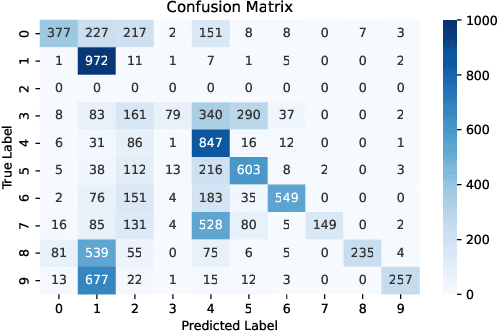
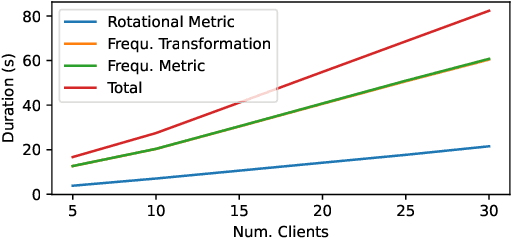
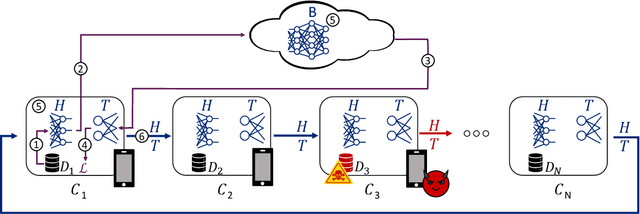
Abstract:Split Learning (SL) is a distributed deep learning approach enabling multiple clients and a server to collaboratively train and infer on a shared deep neural network (DNN) without requiring clients to share their private local data. The DNN is partitioned in SL, with most layers residing on the server and a few initial layers and inputs on the client side. This configuration allows resource-constrained clients to participate in training and inference. However, the distributed architecture exposes SL to backdoor attacks, where malicious clients can manipulate local datasets to alter the DNN's behavior. Existing defenses from other distributed frameworks like Federated Learning are not applicable, and there is a lack of effective backdoor defenses specifically designed for SL. We present SafeSplit, the first defense against client-side backdoor attacks in Split Learning (SL). SafeSplit enables the server to detect and filter out malicious client behavior by employing circular backward analysis after a client's training is completed, iteratively reverting to a trained checkpoint where the model under examination is found to be benign. It uses a two-fold analysis to identify client-induced changes and detect poisoned models. First, a static analysis in the frequency domain measures the differences in the layer's parameters at the server. Second, a dynamic analysis introduces a novel rotational distance metric that assesses the orientation shifts of the server's layer parameters during training. Our comprehensive evaluation across various data distributions, client counts, and attack scenarios demonstrates the high efficacy of this dual analysis in mitigating backdoor attacks while preserving model utility.
Beyond Random Inputs: A Novel ML-Based Hardware Fuzzing
Apr 10, 2024
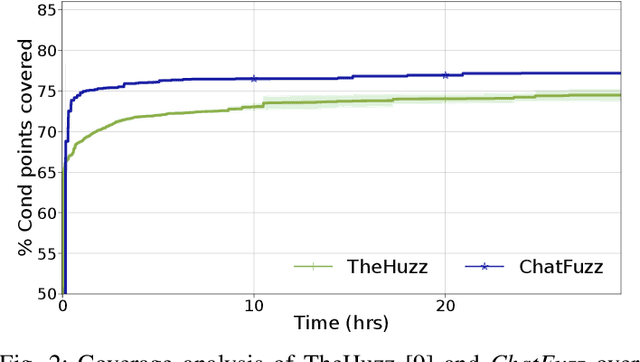
Abstract:Modern computing systems heavily rely on hardware as the root of trust. However, their increasing complexity has given rise to security-critical vulnerabilities that cross-layer at-tacks can exploit. Traditional hardware vulnerability detection methods, such as random regression and formal verification, have limitations. Random regression, while scalable, is slow in exploring hardware, and formal verification techniques are often concerned with manual effort and state explosions. Hardware fuzzing has emerged as an effective approach to exploring and detecting security vulnerabilities in large-scale designs like modern processors. They outperform traditional methods regarding coverage, scalability, and efficiency. However, state-of-the-art fuzzers struggle to achieve comprehensive coverage of intricate hardware designs within a practical timeframe, often falling short of a 70% coverage threshold. We propose a novel ML-based hardware fuzzer, ChatFuzz, to address this challenge. Ourapproach leverages LLMs like ChatGPT to understand processor language, focusing on machine codes and generating assembly code sequences. RL is integrated to guide the input generation process by rewarding the inputs using code coverage metrics. We use the open-source RISCV-based RocketCore processor as our testbed. ChatFuzz achieves condition coverage rate of 75% in just 52 minutes compared to a state-of-the-art fuzzer, which requires a lengthy 30-hour window to reach a similar condition coverage. Furthermore, our fuzzer can attain 80% coverage when provided with a limited pool of 10 simulation instances/licenses within a 130-hour window. During this time, it conducted a total of 199K test cases, of which 6K produced discrepancies with the processor's golden model. Our analysis identified more than 10 unique mismatches, including two new bugs in the RocketCore and discrepancies from the RISC-V ISA Simulator.
One for All and All for One: GNN-based Control-Flow Attestation for Embedded Devices
Mar 12, 2024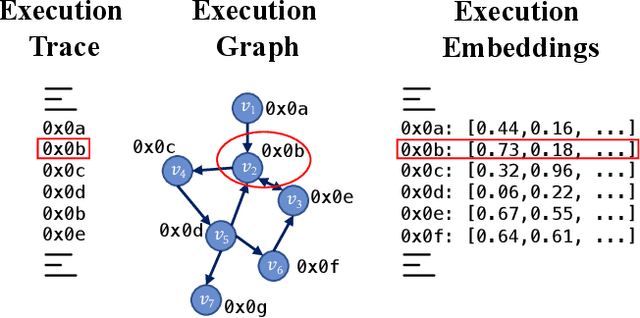



Abstract:Control-Flow Attestation (CFA) is a security service that allows an entity (verifier) to verify the integrity of code execution on a remote computer system (prover). Existing CFA schemes suffer from impractical assumptions, such as requiring access to the prover's internal state (e.g., memory or code), the complete Control-Flow Graph (CFG) of the prover's software, large sets of measurements, or tailor-made hardware. Moreover, current CFA schemes are inadequate for attesting embedded systems due to their high computational overhead and resource usage. In this paper, we overcome the limitations of existing CFA schemes for embedded devices by introducing RAGE, a novel, lightweight CFA approach with minimal requirements. RAGE can detect Code Reuse Attacks (CRA), including control- and non-control-data attacks. It efficiently extracts features from one execution trace and leverages Unsupervised Graph Neural Networks (GNNs) to identify deviations from benign executions. The core intuition behind RAGE is to exploit the correspondence between execution trace, execution graph, and execution embeddings to eliminate the unrealistic requirement of having access to a complete CFG. We evaluate RAGE on embedded benchmarks and demonstrate that (i) it detects 40 real-world attacks on embedded software; (ii) Further, we stress our scheme with synthetic return-oriented programming (ROP) and data-oriented programming (DOP) attacks on the real-world embedded software benchmark Embench, achieving 98.03% (ROP) and 91.01% (DOP) F1-Score while maintaining a low False Positive Rate of 3.19%; (iii) Additionally, we evaluate RAGE on OpenSSL, used by millions of devices and achieve 97.49% and 84.42% F1-Score for ROP and DOP attack detection, with an FPR of 5.47%.
DeepEclipse: How to Break White-Box DNN-Watermarking Schemes
Mar 06, 2024Abstract:Deep Learning (DL) models have become crucial in digital transformation, thus raising concerns about their intellectual property rights. Different watermarking techniques have been developed to protect Deep Neural Networks (DNNs) from IP infringement, creating a competitive field for DNN watermarking and removal methods. The predominant watermarking schemes use white-box techniques, which involve modifying weights by adding a unique signature to specific DNN layers. On the other hand, existing attacks on white-box watermarking usually require knowledge of the specific deployed watermarking scheme or access to the underlying data for further training and fine-tuning. We propose DeepEclipse, a novel and unified framework designed to remove white-box watermarks. We present obfuscation techniques that significantly differ from the existing white-box watermarking removal schemes. DeepEclipse can evade watermark detection without prior knowledge of the underlying watermarking scheme, additional data, or training and fine-tuning. Our evaluation reveals that DeepEclipse excels in breaking multiple white-box watermarking schemes, reducing watermark detection to random guessing while maintaining a similar model accuracy as the original one. Our framework showcases a promising solution to address the ongoing DNN watermark protection and removal challenges.
FreqFed: A Frequency Analysis-Based Approach for Mitigating Poisoning Attacks in Federated Learning
Dec 07, 2023Abstract:Federated learning (FL) is a collaborative learning paradigm allowing multiple clients to jointly train a model without sharing their training data. However, FL is susceptible to poisoning attacks, in which the adversary injects manipulated model updates into the federated model aggregation process to corrupt or destroy predictions (untargeted poisoning) or implant hidden functionalities (targeted poisoning or backdoors). Existing defenses against poisoning attacks in FL have several limitations, such as relying on specific assumptions about attack types and strategies or data distributions or not sufficiently robust against advanced injection techniques and strategies and simultaneously maintaining the utility of the aggregated model. To address the deficiencies of existing defenses, we take a generic and completely different approach to detect poisoning (targeted and untargeted) attacks. We present FreqFed, a novel aggregation mechanism that transforms the model updates (i.e., weights) into the frequency domain, where we can identify the core frequency components that inherit sufficient information about weights. This allows us to effectively filter out malicious updates during local training on the clients, regardless of attack types, strategies, and clients' data distributions. We extensively evaluate the efficiency and effectiveness of FreqFed in different application domains, including image classification, word prediction, IoT intrusion detection, and speech recognition. We demonstrate that FreqFed can mitigate poisoning attacks effectively with a negligible impact on the utility of the aggregated model.
DEMASQ: Unmasking the ChatGPT Wordsmith
Nov 08, 2023
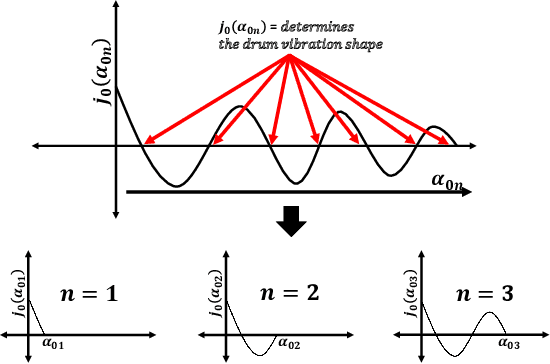
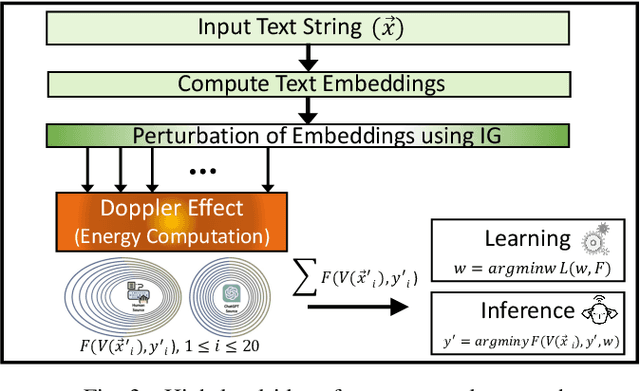
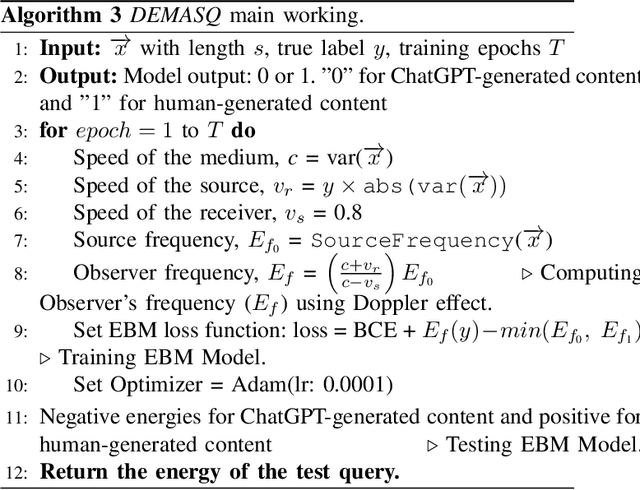
Abstract:The potential misuse of ChatGPT and other Large Language Models (LLMs) has raised concerns regarding the dissemination of false information, plagiarism, academic dishonesty, and fraudulent activities. Consequently, distinguishing between AI-generated and human-generated content has emerged as an intriguing research topic. However, current text detection methods lack precision and are often restricted to specific tasks or domains, making them inadequate for identifying content generated by ChatGPT. In this paper, we propose an effective ChatGPT detector named DEMASQ, which accurately identifies ChatGPT-generated content. Our method addresses two critical factors: (i) the distinct biases in text composition observed in human- and machine-generated content and (ii) the alterations made by humans to evade previous detection methods. DEMASQ is an energy-based detection model that incorporates novel aspects, such as (i) optimization inspired by the Doppler effect to capture the interdependence between input text embeddings and output labels, and (ii) the use of explainable AI techniques to generate diverse perturbations. To evaluate our detector, we create a benchmark dataset comprising a mixture of prompts from both ChatGPT and humans, encompassing domains such as medical, open Q&A, finance, wiki, and Reddit. Our evaluation demonstrates that DEMASQ achieves high accuracy in identifying content generated by ChatGPT.
To ChatGPT, or not to ChatGPT: That is the question!
Apr 05, 2023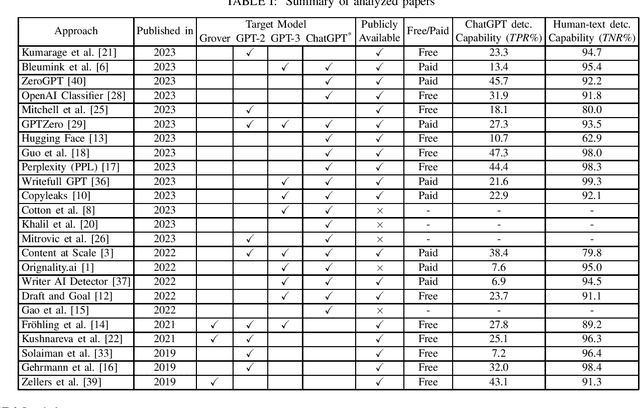
Abstract:ChatGPT has become a global sensation. As ChatGPT and other Large Language Models (LLMs) emerge, concerns of misusing them in various ways increase, such as disseminating fake news, plagiarism, manipulating public opinion, cheating, and fraud. Hence, distinguishing AI-generated from human-generated becomes increasingly essential. Researchers have proposed various detection methodologies, ranging from basic binary classifiers to more complex deep-learning models. Some detection techniques rely on statistical characteristics or syntactic patterns, while others incorporate semantic or contextual information to improve accuracy. The primary objective of this study is to provide a comprehensive and contemporary assessment of the most recent techniques in ChatGPT detection. Additionally, we evaluated other AI-generated text detection tools that do not specifically claim to detect ChatGPT-generated content to assess their performance in detecting ChatGPT-generated content. For our evaluation, we have curated a benchmark dataset consisting of prompts from ChatGPT and humans, including diverse questions from medical, open Q&A, and finance domains and user-generated responses from popular social networking platforms. The dataset serves as a reference to assess the performance of various techniques in detecting ChatGPT-generated content. Our evaluation results demonstrate that none of the existing methods can effectively detect ChatGPT-generated content.
ARGUS: Context-Based Detection of Stealthy IoT Infiltration Attacks
Feb 16, 2023Abstract:IoT application domains, device diversity and connectivity are rapidly growing. IoT devices control various functions in smart homes and buildings, smart cities, and smart factories, making these devices an attractive target for attackers. On the other hand, the large variability of different application scenarios and inherent heterogeneity of devices make it very challenging to reliably detect abnormal IoT device behaviors and distinguish these from benign behaviors. Existing approaches for detecting attacks are mostly limited to attacks directly compromising individual IoT devices, or, require predefined detection policies. They cannot detect attacks that utilize the control plane of the IoT system to trigger actions in an unintended/malicious context, e.g., opening a smart lock while the smart home residents are absent. In this paper, we tackle this problem and propose ARGUS, the first self-learning intrusion detection system for detecting contextual attacks on IoT environments, in which the attacker maliciously invokes IoT device actions to reach its goals. ARGUS monitors the contextual setting based on the state and actions of IoT devices in the environment. An unsupervised Deep Neural Network (DNN) is used for modeling the typical contextual device behavior and detecting actions taking place in abnormal contextual settings. This unsupervised approach ensures that ARGUS is not restricted to detecting previously known attacks but is also able to detect new attacks. We evaluated ARGUS on heterogeneous real-world smart-home settings and achieve at least an F1-Score of 99.64% for each setup, with a false positive rate (FPR) of at most 0.03%.
BayBFed: Bayesian Backdoor Defense for Federated Learning
Jan 23, 2023Abstract:Federated learning (FL) allows participants to jointly train a machine learning model without sharing their private data with others. However, FL is vulnerable to poisoning attacks such as backdoor attacks. Consequently, a variety of defenses have recently been proposed, which have primarily utilized intermediary states of the global model (i.e., logits) or distance of the local models (i.e., L2-norm) from the global model to detect malicious backdoors. However, as these approaches directly operate on client updates, their effectiveness depends on factors such as clients' data distribution or the adversary's attack strategies. In this paper, we introduce a novel and more generic backdoor defense framework, called BayBFed, which proposes to utilize probability distributions over client updates to detect malicious updates in FL: it computes a probabilistic measure over the clients' updates to keep track of any adjustments made in the updates, and uses a novel detection algorithm that can leverage this probabilistic measure to efficiently detect and filter out malicious updates. Thus, it overcomes the shortcomings of previous approaches that arise due to the direct usage of client updates; as our probabilistic measure will include all aspects of the local client training strategies. BayBFed utilizes two Bayesian Non-Parametric extensions: (i) a Hierarchical Beta-Bernoulli process to draw a probabilistic measure given the clients' updates, and (ii) an adaptation of the Chinese Restaurant Process (CRP), referred by us as CRP-Jensen, which leverages this probabilistic measure to detect and filter out malicious updates. We extensively evaluate our defense approach on five benchmark datasets: CIFAR10, Reddit, IoT intrusion detection, MNIST, and FMNIST, and show that it can effectively detect and eliminate malicious updates in FL without deteriorating the benign performance of the global model.
Follow Us and Become Famous! Insights and Guidelines From Instagram Engagement Mechanisms
Jan 17, 2023



Abstract:With 1.3 billion users, Instagram (IG) has also become a business tool. IG influencer marketing, expected to generate $33.25 billion in 2022, encourages companies and influencers to create trending content. Various methods have been proposed for predicting a post's popularity, i.e., how much engagement (e.g., Likes) it will generate. However, these methods are limited: first, they focus on forecasting the likes, ignoring the number of comments, which became crucial in 2021. Secondly, studies often use biased or limited data. Third, researchers focused on Deep Learning models to increase predictive performance, which are difficult to interpret. As a result, end-users can only estimate engagement after a post is created, which is inefficient and expensive. A better approach is to generate a post based on what people and IG like, e.g., by following guidelines. In this work, we uncover part of the underlying mechanisms driving IG engagement. To achieve this goal, we rely on statistical analysis and interpretable models rather than Deep Learning (black-box) approaches. We conduct extensive experiments using a worldwide dataset of 10 million posts created by 34K global influencers in nine different categories. With our simple yet powerful algorithms, we can predict engagement up to 94% of F1-Score, making us comparable and even superior to Deep Learning-based method. Furthermore, we propose a novel unsupervised algorithm for finding highly engaging topics on IG. Thanks to our interpretable approaches, we conclude by outlining guidelines for creating successful posts.
 Add to Chrome
Add to Chrome Add to Firefox
Add to Firefox Add to Edge
Add to Edge